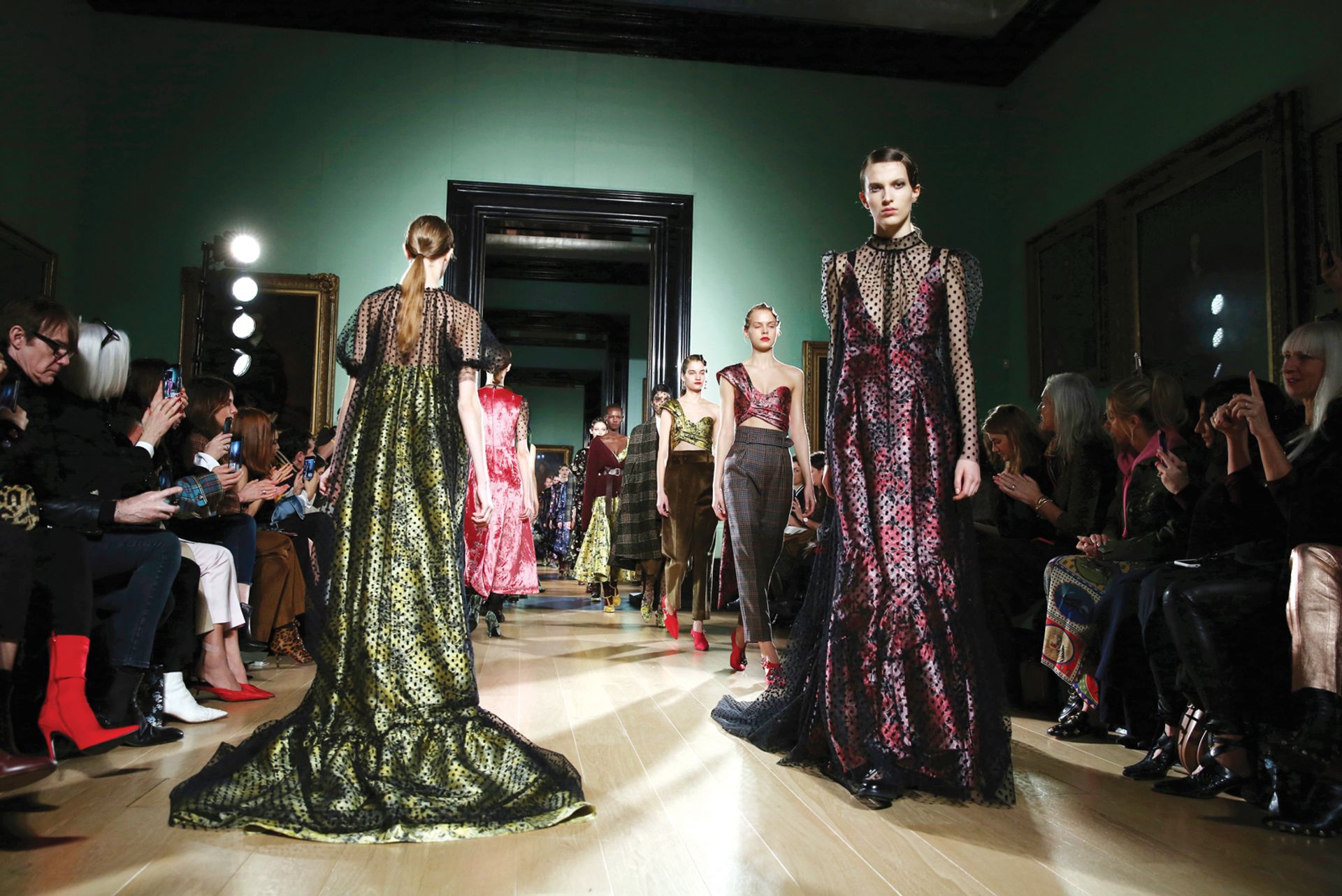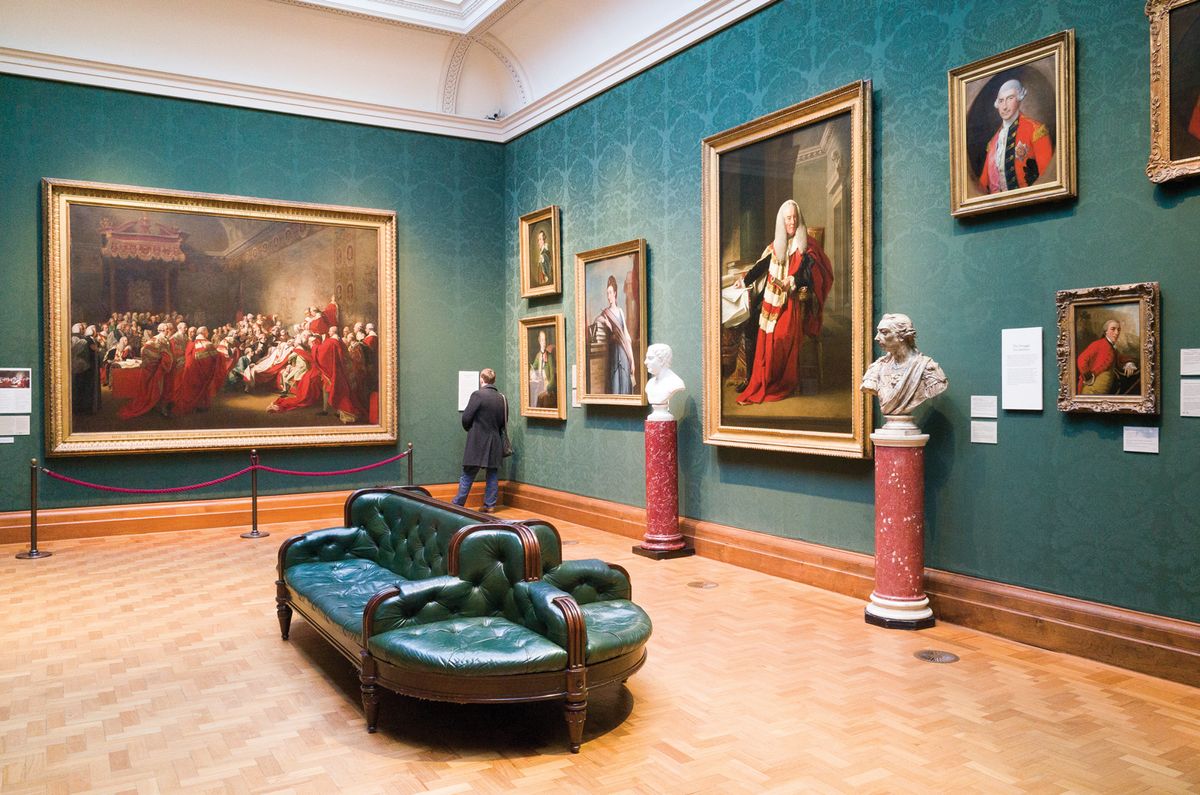The National Portrait Gallery’s dramatic fall in visitor figures since early last year was the result of serious counting errors by an external company. The data, produced by Ipsos Retail Performance, “significantly undercounted visitors through the main entrance”, according to a spokeswoman for the gallery. The Art Newspaper can reveal that faulty equipment, which was then incorrectly monitored, was the cause of the errors.
The figures appear to show that visitor numbers have halved at London’s National Portrait Gallery (NPG) in the past three years. The company recorded that the gallery had 2.1 million visitors in 2015/16, 1.9 million in 2016/17 and 1.1 million in 2017/18. During the first three months of 2018/19 (April to June), the number plunged 28% on the same period last year. These figures have been damaging to the gallery’s reputation and have caused concern to its largest funder, the government’s department for culture.
It should be stressed that the gallery does appear to have suffered a fall in attendance, although the drop has not been as large as that shown in the Ipsos data. The neighbouring National Gallery has also faced a fall in visitor numbers.
The total number of visitors in 2017/18 was included in the NPG’s annual report and accounts, which was published by Parliament in July. The department for culture has been publishing monthly data, with the figure for June going online on 5 August.
We asked Ipsos whether it acknowledges that there has been a problem. A spokesman said: “The issue has been reviewed internally as a matter of urgency and a course of remedial action has been agreed with the gallery.”
The National Portrait Gallery first raised questions about a possible fault with the Ipsos system in March 2017, after the apparent fall had begun. The company then tested the accuracy of the automatic counting system at the main entrance, which is used by the vast majority of visitors who enter. (There is also a shop entrance, and at times, a side entrance is in operation.) The counting device uses a combination of technologies, including active infrared and optical sensors.
Failed the test
The test was conducted by comparing the automatic system with an accurate manual count. An automatic device was found to undercount visitors, so it failed the test. Inexplicably, Ipsos incorrectly informed the gallery that the equipment had “passed” the test. So, for more than a year, the faulty equipment remained in use and incorrect data was supplied to the government. A recent investigation into why the test was categorised as a pass rather than a failure found that “human error” within Ipsos was to blame.
The failure of the counting system eventually came to light in July this year, when the gallery discovered that the BP Portrait Award exhibition (until 23 September), which was subject to a manual count, was receiving more visitors than the automatic counters indicated for the entire gallery. Last year, the free BP exhibition attracted 234,604 visitors, and numbers for this year’s three-month show are slightly higher.
Significantly undercounting
When the gallery again raised the issue with Ipsos, the company retested the system against a manual count. This indicated that Ipsos’s automatic system was significantly undercounting visitors. A new automatic system was then installed as a matter of urgency.
Tests are now being conducted using the original equipment, the new equipment and a manual count, to calculate revised figures for the period since early last year. These will then be submitted to the department for culture.
Meanwhile, the gallery has had to endure the negative publicity that followed press reports about the dramatic drop in visitors, impacting on its reputation. Falling visitor numbers may also make it more difficult to solicit sponsorship and donations.
This comes at a particularly delicate time, since the gallery has to raise a total of £35.5m for a major refurbishment, to be completed in 2022. The Heritage Lottery Fund has pledged £9.4m and a further £13.2m has been secured from private donors, Fundraising is on target, although £13m still needs to be raised.
The Art Newspaper asked the gallery if Ipsos would be providing financial compensation for the miscounting. The gallery was “unable” to comment, which suggests that it might be discussing the situation with the company and considering its legal position.
The gallery continues to use Ipsos Retail Performance, but it is unwilling to disclose when the current contract is due to end. Ipsos has been working for the gallery for 17 years.
Of the other major national art museums, the British Museum and the Victoria and Albert Museum use another company, Intelligent Counting. The Tate and the National Gallery do their own counting of visitors.
UPDATE: Following our exclusive report, the National Portrait Gallery released its updated visitor figures this afternoon (28 August). The new data shows that the gallery had 1,692,000 visitors in the financial year 2017/18, not the earlier reported 1,072,000. This represented a 10 per cent drop on the previous year, not the 43 per cent fall based on the original calculation. The new figure for the calendar year 2017 was 1,703,000, rather than the originally reported 1,272,000.
For the first three months of the current financial year, April to June 2018, the new figure is 327,000, compared to the original calculation of 197,000. The bottom line is that Ipsos very substantially undercounted the number of visitors. This new data is being submitted to the culture department.

The museum caused controversy in February when it closed completely on 13 February to host the designer Erdem’s show during London Fashion Week Grant Pollard/Invision/AP; © REX/Shutterstock
2017/18: a challenging year for the NPG
Although the fall in visitor numbers was not as drastic as the National Portrait Gallery suggests in its 2017/18 annual accounts, in financial terms it was still a “challenging” year.
Ticket income from charging exhibitions was down by 13%, to £2.6m. Two recent shows—of work by Gillian Wearing and Claude Cahun (spring 2017, 18,000 visitors) and Tacita Dean (spring 2018, 15,000)—were the gallery’s worst-performing ticketed shows since the 1990s. However, there have been blockbusters, such as Cézanne Portraits (winter 2017-18, 136,426). Profits from the institution’s trading company fell by 28% last year, to £0.8m.
In its accounts, the gallery blamed the apparently falling visitor numbers on external factors. “Concerns over security [following terrorist incidents in London], the rise in the cost of living, increased travel costs and the transport disruptions affecting a number of key commuter lines into and stations in central London may all have played their part.”
Responding to financial pressures, the gallery restructured “to manage down staff numbers”, with 32 redundancies and agreed departures, along with a considerable turnover of staff. Senior staff who left included Tarnya Cooper (curatorial director), Paul Moorhouse (head of collection displays), Peter Funnell (head of research) and Phillip Prodger (head of photographs).
The gallery’s accounts also reveal that it received a total of £372,000 for venue hire in 2017/18. This included payment from the designer Erdem for a London Fashion Week show on 19 February, which involved the closure of the entire gallery to the public for the whole day. This seems to be the only time that a major UK national museum has barred visitors for a full day to rent out its entire space for a fee (other than the Imperial War Museum, on three occasions in 2010-12).
The minutes of the trustees’ meeting of 2 March record that their chairman, David Ross, said that the decision “to close in order to host the Erdem fashion show in February had been received positively”. This comes as a surprise, since press reports suggest that the gallery lost considerable public goodwill, with hundreds of potential visitors being turned away at the door. The £372,000 raised through venue hire was below the gallery’s target of £445,000, which may explain why it accepted the Erdem payment towards the end of the financial year.


